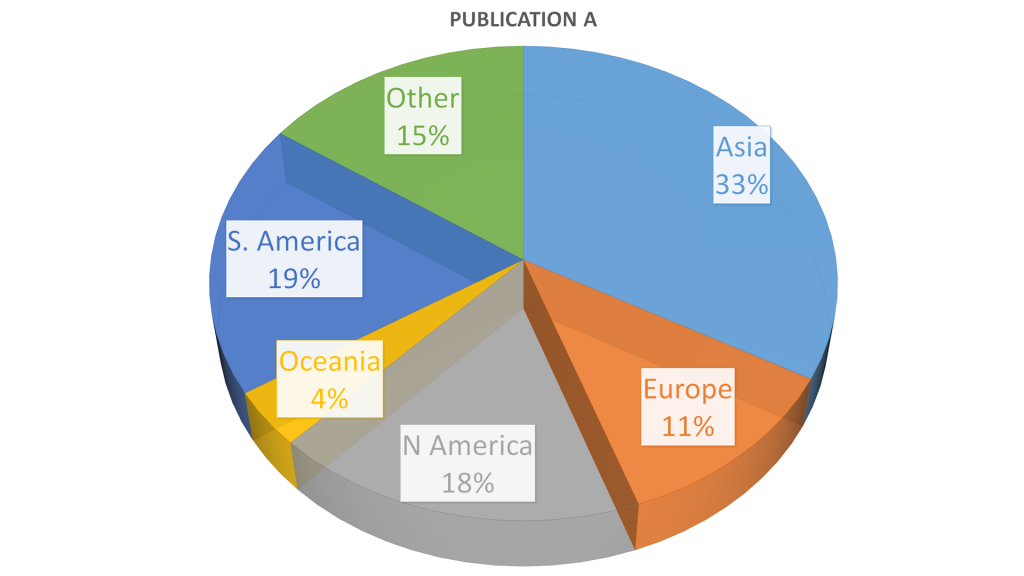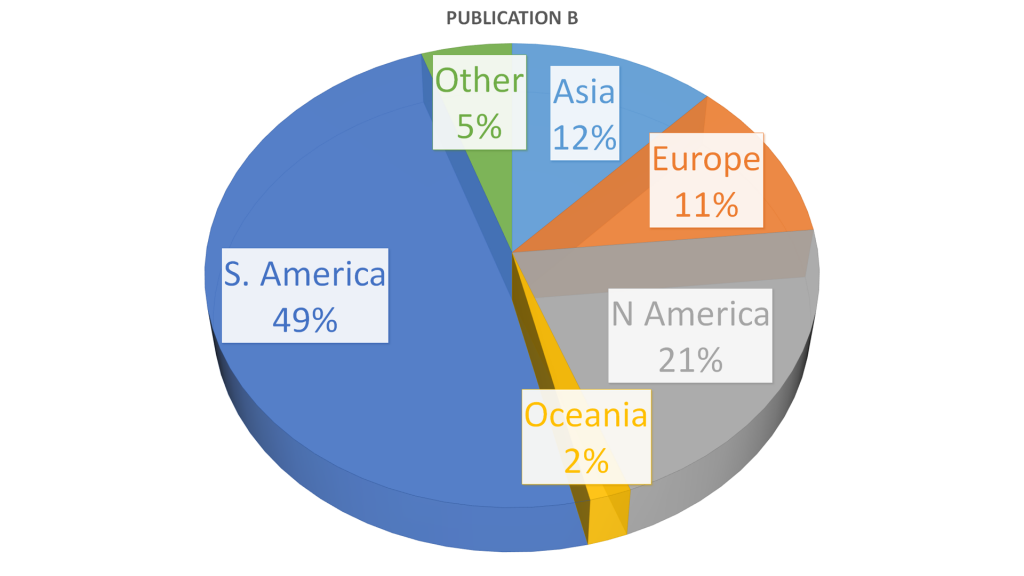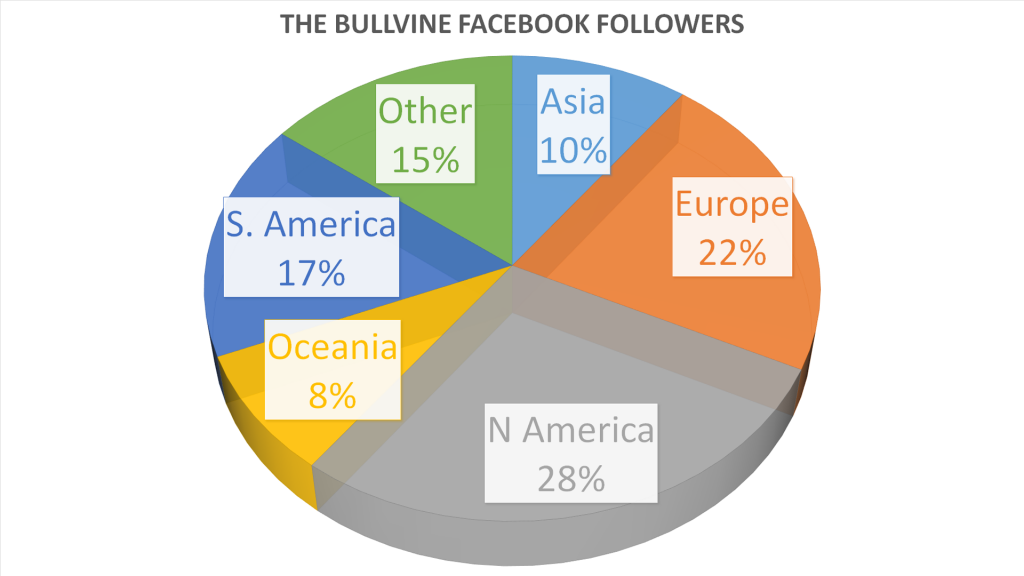Over the past few months, there has been a consistent theme to the conversation I have with many breeders about their marketing efforts. They know that they need to “leverage the power of social media” in order to get their genetic offerings exposed to the world. But they are finding it hard to do. Then they see Dairy Genetic publications getting thousands of likes and shares, but they are all from countries that will not be buying genetics from them. No wonder they get discouraged. In order to get to the bottom of this problem, we decided to take a closer look at this issue.
In a trend that we had been noticing ourselves lately, our two largest competitors (based on Facebook likes) had been growing significantly and getting likes and shares on content that, for the most part, had no viral attributes.
To get to the bottom of this, we decided to take a look at the top 10 posts for each of these publications and analyze where these shares were coming from. What we found was that for these two publications that have over 40,000 likes on their pages, they got over 70% of their likes on these posts from individuals that were not directly connected to the dairy genetics industry.
This had us wondering “How could this happen?” So we then went and looked at where each of these pages got most of their followers from using Facebooks targeting tools. The following is what we found.
For Publication A, a western Canadian based dairy genetics magazine we found that they received over 33% of their Facebook followers from Asia (India, Pakistan, etc.) and their 2nd largest content for followers was South America.
For Publication B, a US based Holstein publication, we found that almost half their followers come from South America.
We found these proportions very different to our readership and worldwide dairy genetic market share, so we decided to look at what our proportions where, and found the following.(Read more: The fakebook – Our Secret is Exposed)
So then we started to look at how this could happen and found a potential cause for this problem: Facebook Promoted Posts. Facebook has significantly y changed how often a post on a Fan Page reaches into each follower’s news stream. A couple of years ago, pretty much every post made it into follower’s streams. However, with Facebook wanting to increase revenue they have made it very hard for Fan pages to get their posts seen, forcing them to leverage paid/promoted posts. The challenge with these posts is that if you just tell Facebook to promote the post for say $10, Facebook will promote that post to the least expensive audience it has, typically this means Asia and South America. So for those pages leveraging the promoted posts they are seeing most of their paid engagement coming from countries like India, Pakistan and Colombia.
Facing this same challenge ourselves we have been experimenting with how best to be seen by the desired target audience for Dairy Cattle Genetics, (i.e. North America and Europe), and have found that we need to do targeted posts. These are posts that are specially promoted to these regions. What we have found is that while our total number of likes on each post are not as high, they are getting significant traction with our key audience and driving targeted traffic to our website (which is our main goal). When we compare our reach in regions like North America and Europe, we actually find that we have as much or more than these two publications that have almost twice the followers. What we don’t have is twice the noise. I guess that is why we have almost 50% higher Klout Score (Measure of influence in Social Media) than any of our competitors.
Some breeders who have not opted to go the paid or promoted posts route, now are creating or leveraging their current personal accounts for marketing their dairy cattle genetics to the world. This strategy while certainly cheaper also comes with many tradeoffs. First one being you get no performance reporting data, so you are unable to specifically see the success of each post, and can only look at the total number of likes or shares to evaluate the success of your company. Another tradeoff is that you do not reach as many people. Since your own posts are limited to the total number of friends you have on Facebook, (which for most is under 1,000). As compared to the number of followers, the typical fan page has which is about 2,000). (Read more: The Top 10 Dairy Breeder Facebook Fan Pages and Why They’re Successful). So while you are getting cheaper access to those people you already know (i.e. friends) you are missing out on a significant portion of the marketplace. This is often why you we see us share a Fan Page post on our personal pages in order to gain this exposure.
The Bullvine Bottom Line
There is no question that Facebook marketing is not easy. It’s not as easy as “Post it and buyers will come.” It takes effort to achieve significant results from Facebook marketing. Trying to take the easy way out, or just throw money at the problem will not work. You need to make sure you have a targeted strategy in order to get significant results. Sure you can drive the number of likes and shares up by spending more money, but you will not gain any influence. In order to gain influence you need to base your strategy on producing quality content (posts) that your ideal audience actually wants to see in their streams, not what someone has paid Facebook to show you.
To learn how to get your farm on Facebook download this free guide.














